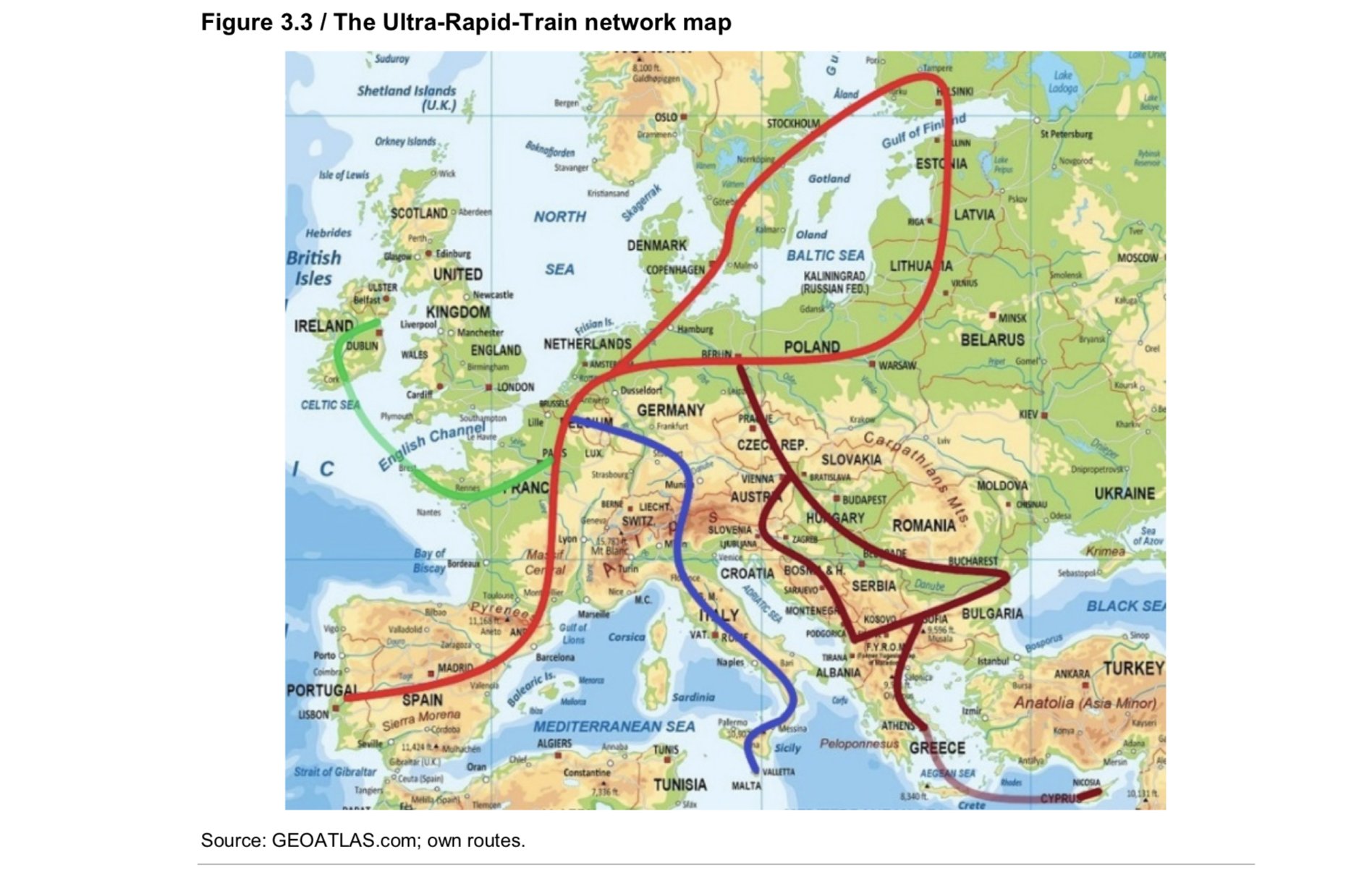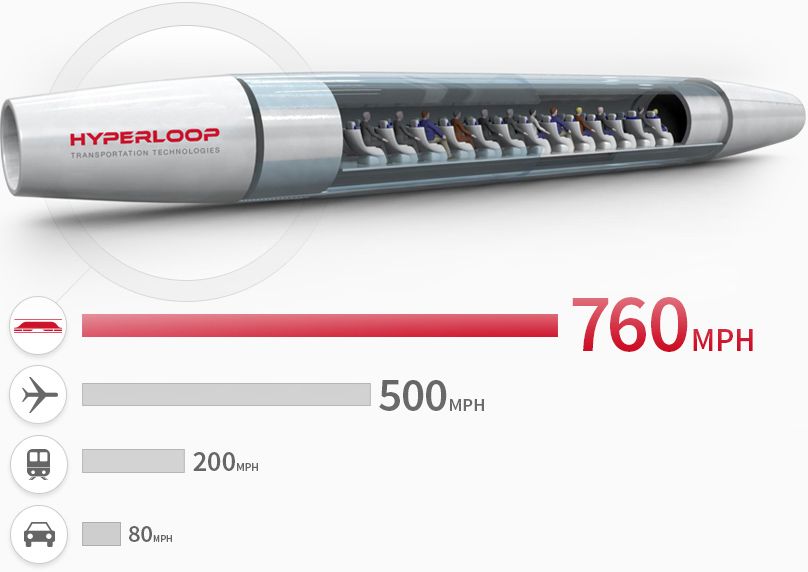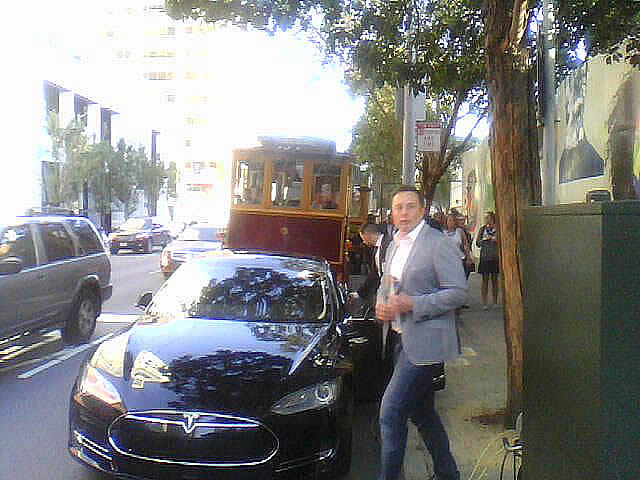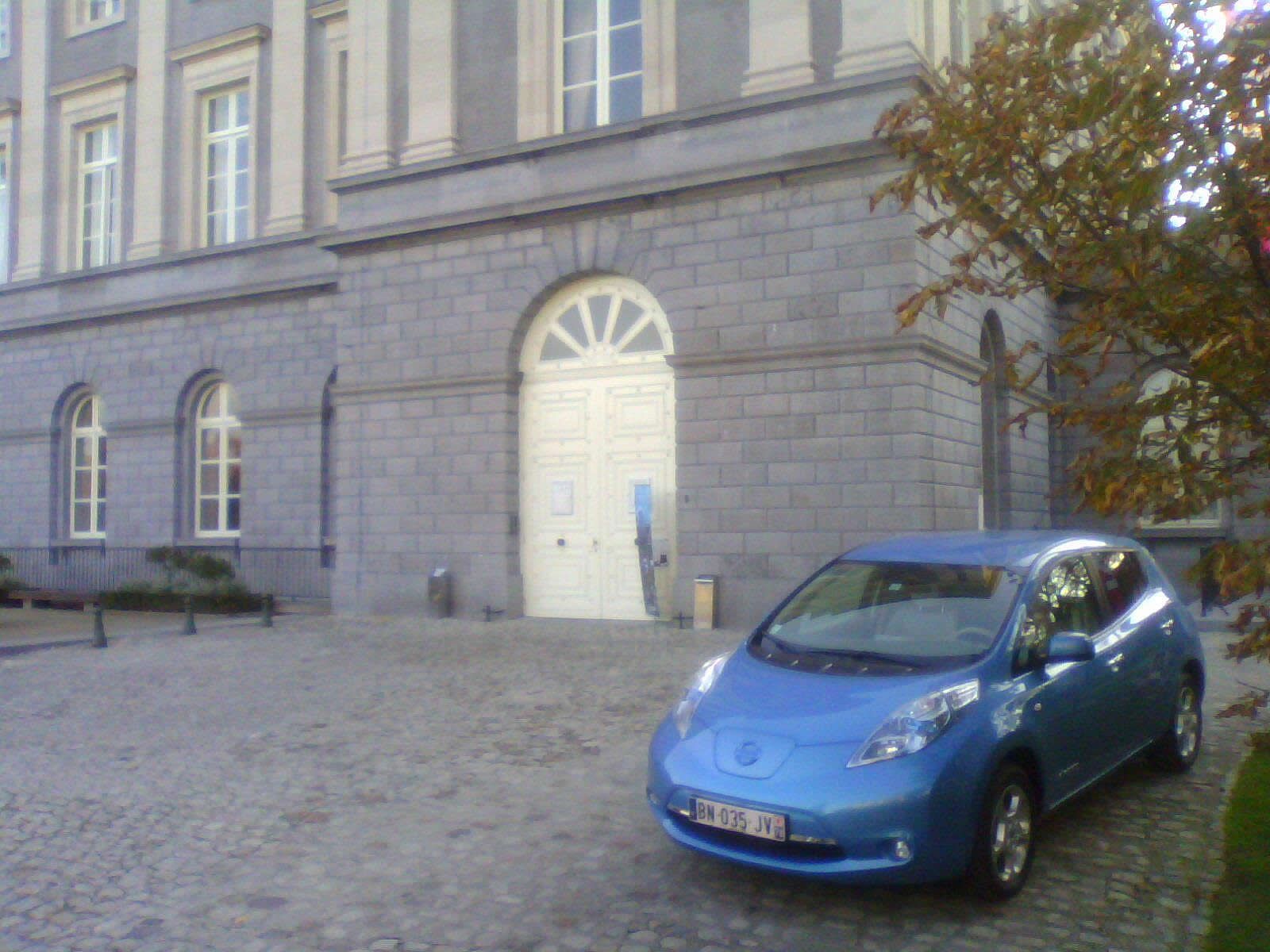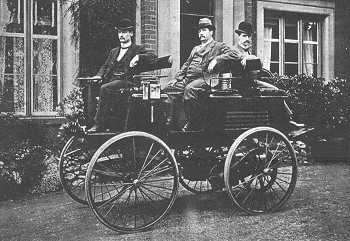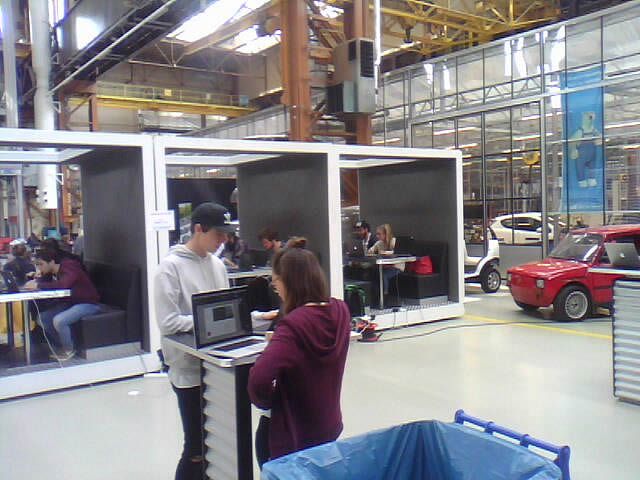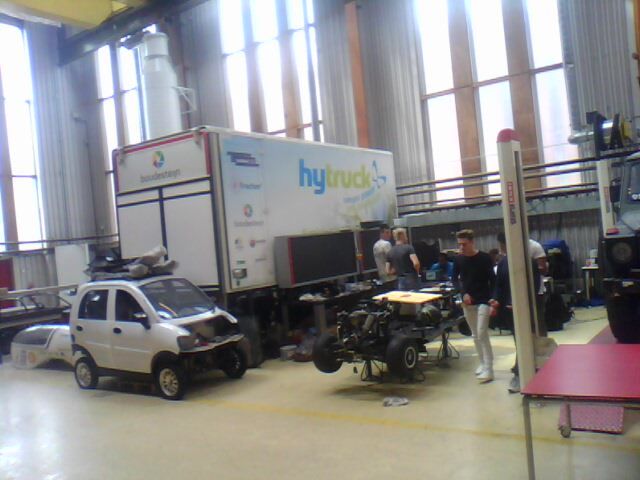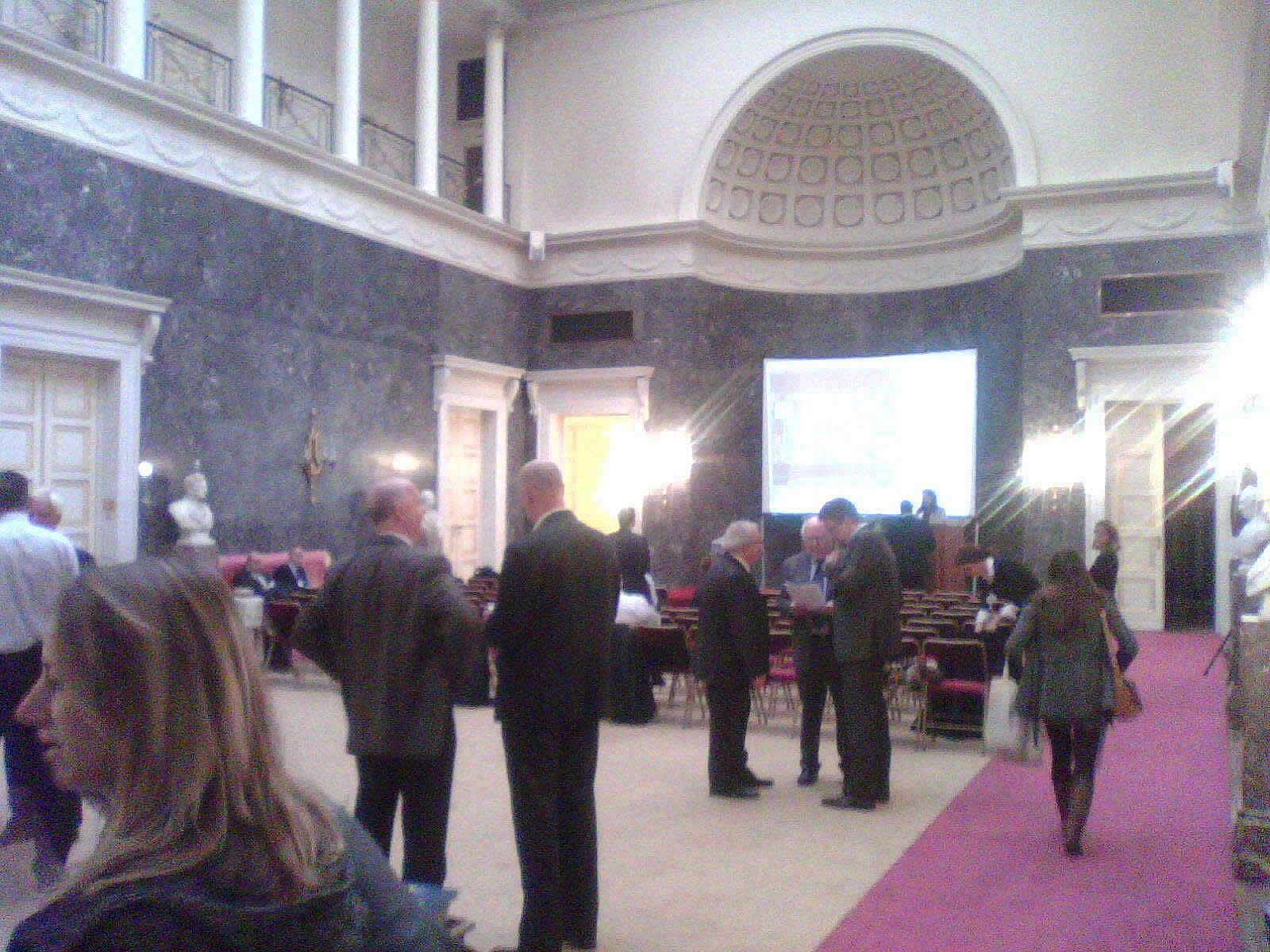|
To investigate, develop and validate an integrated platform, the MyWay project, funded by the European Commission, is started. MYWAY is a 7th Framework ICT Project that runs from 2013 through 2016 implemented by 14 partner organisations from across Europe that range from public authorities, research centers to SME’s.
Placing the traveller at the heart of mobility, MYWAY is expected to boost the travellers’ usage of greener mobility services by enabling the consideration of all available resources and their appropriate allocation to journey plans, thus enhancing the attractiveness, comfort and efficiency of the transport networks and minimising the GHG emissions by stimulating users to switch to more sustainable mobility choices and behaviour, including cloud-based services and facilities to support community supplied information collection and processing.
The purpose is to holistically address the efficient and seamless integration and use of complementary, capacity-limited mobility services in the overall urban travel chain, including all transport modes (motorised and non-motorised, EVs, public transport, flexible services such as transport on-demand) and mobility sharing schemes (e.g. car sharing, motorbike sharing and carpooling). The MyWay basic objectives are to:
-
Enable a better balance between mobility offers by facilitating the seamless integration of public transport and other sustainable public and private transport modes in users’ personal mobility choices.
-
Stimulate service cooperation and market development by providing tools and technical solutions for transport service providers and operators to help improve service offer, interoperability and accessibility in the overall multimodal service chain
-
Enhancing the personalisation and user adaptation of mobility services by increasing the cooperation between users and the transport system through incorporating user experiences, social networking and crowd sourcing in service planning and use.
- Foster ICT transformative technologies in smart mobility by providing and validating in real-life conditions innovative technological solutions for the next generation of smart mobility services.
On 8 November 2012, the European Commission (EC) issued also a communication on the CARS 2020 Action Plan to boost the competitiveness and sustainability of the Europe’s automotive industry in the 2020 deadline framework. The plan entails a massive innovative push by streamlining research and innovation under the European Green Vehicle Initiative. The document focuses on four major points that need to be addressed in order to ensure a sustainable growth in the sector:
- Investment in advanced technology and innovation;
- Improvement of market conditions;
- Enhancement of competitiveness on the global stage;
- Structure management and change anticipation. |
 |
The Commission provides input on several problem areas, such as financing for RDI (research, development and innovation), CO2 emission control, noise and pollution, road safety, smart regulation of the internal market, trade policy, harmonization and industrial adjustment.
Emphasis was given on the topic of alternative fuels and infrastructure development, making several important short and long-term plans. The Commission will put forward a proposal for an Alternative Fuels Strategy by the end of the month, including the adoption alternative fuel infrastructure legislation (as part of the Clean Power for Transport package) aiming to establish deployment minimums.
The Commission will be closely monitoring the implementation of “practical and satisfactory solutions for the infrastructure side of the re-charging interface for electric vehicles” as well as the proper implementation of the National Renewable Energy Action Plan. An important promise was also made regarding fuel compatibility and the fuel labeling scheme, aimed at establishing a comprehensive means of informing the consumers on the growing number of alternative fuels that are being made available across Europe. With this document the Commission also calls for public support in pilot projects, standardization, investment support and legislation.
EU Commissioner for Industry and Entrepreneurship Antonio Tajani highlighted that “This is the first test, as difficult as it is vital, of our real willingness to promote a new policy”. The CARS 2020 programme would also present further possibilities for cooperation between the EC and the European Investment Bank (EIB). More information is available here.
The European Commission also confirmed support for the Partnership and aims for the HyER Electromobility Observatory. The Commission looks forward to a strong collaboration with HyER in which the regions provide valuable input on local developments to support the EU in developing effective financial and regulatory measures.
It was expressed that European Regions will support the EU’s objective to halve the use of conventional fuelled vehicles in 2030 and to reduce overall transport emissions by 60% in 2050.
Objectives will be attached to Europe's Energy climate package, Europe 2020.
|
CHIC, the Clean Hydrogen In European Cities Project, is the essential next step leading to the full market commercialization of Fuel Cell Hydrogen powered (FCH) buses.
The project involves integrating FCH buses in daily public transport operations and bus routes in locations across Europe and is based on a staged introduction and build-up of FCH bus fleets, the supporting hydrogen refuelling stations and infrastructure.
Taking place during EU Green Week, this Forum Europe and CEPS conference has as its context the recent publication by the European Commission of the transport white paper, which calls for the complete removal of conventionally-fuelled cars in cities by 2050.
The conference analysed the key policy and business steps (Toyota Motor Europe) required to deploy electric vehicles on a commercial scale and will be of interest to stakeholders in the energy, transport and environment sectors.
The arguments surrounding how best to achieve a low carbon transport system in Europe are now well developed however how best to proceed and where resources should be best allocated remains open for debate, as reaction to the recent EU transport white paper illustrates. The drive to move from fossil fuels to electrically powered cars in all their various guises, has been promoted by some as a silver bullet carrying both environmental and economic advantages, however there remain significant challenges before electric vehicles are rolled out on a commercially viable scale.
With passenger cars (including light vans) accounting for 20% of all CO2 emissions within the European Union and even with the significant reductions stemming from the recent CO2 emissions standards, EU GHG targets up to and beyond 2030 cannot be met without a technological step-change. Electric vehicles over the longer term offer excellent prospects for innovation, growth, jobs and EU competitiveness within the global context, however the work required before 2030 will be key. But how should European policy-makers, car manufacturers, suppliers and energy companies react to ensure electric vehicles become a viable EU wide option for consumers, and are there blockages in the system which are preventing Europe from playing a leading role in the development of these innovative technologies?
Session 1: Incentivising electric vehicles: when and how?
With the necessity for cleaner and more sustainable transport, has the case for electric vehicles, as opposed to other emissions reduction “tools”, been sufficiently made?
Given that large parts of Europe still rely heavily on coal for their power, how can electric cars realistically be deemed “green”?
And how do electric vehicles compare with optimised combustion engine cars on a well-to-wheel basis? Should Europe be incentivising Electric vehicle or CO2-efficiency? With regards financing, many member states have utilised subsidies and tax incentives to make electric vehicles a more attractive option to consumers. However, are pricing mechanisms the only measures that would truly encourage the uptake of electric vehicles? |
|
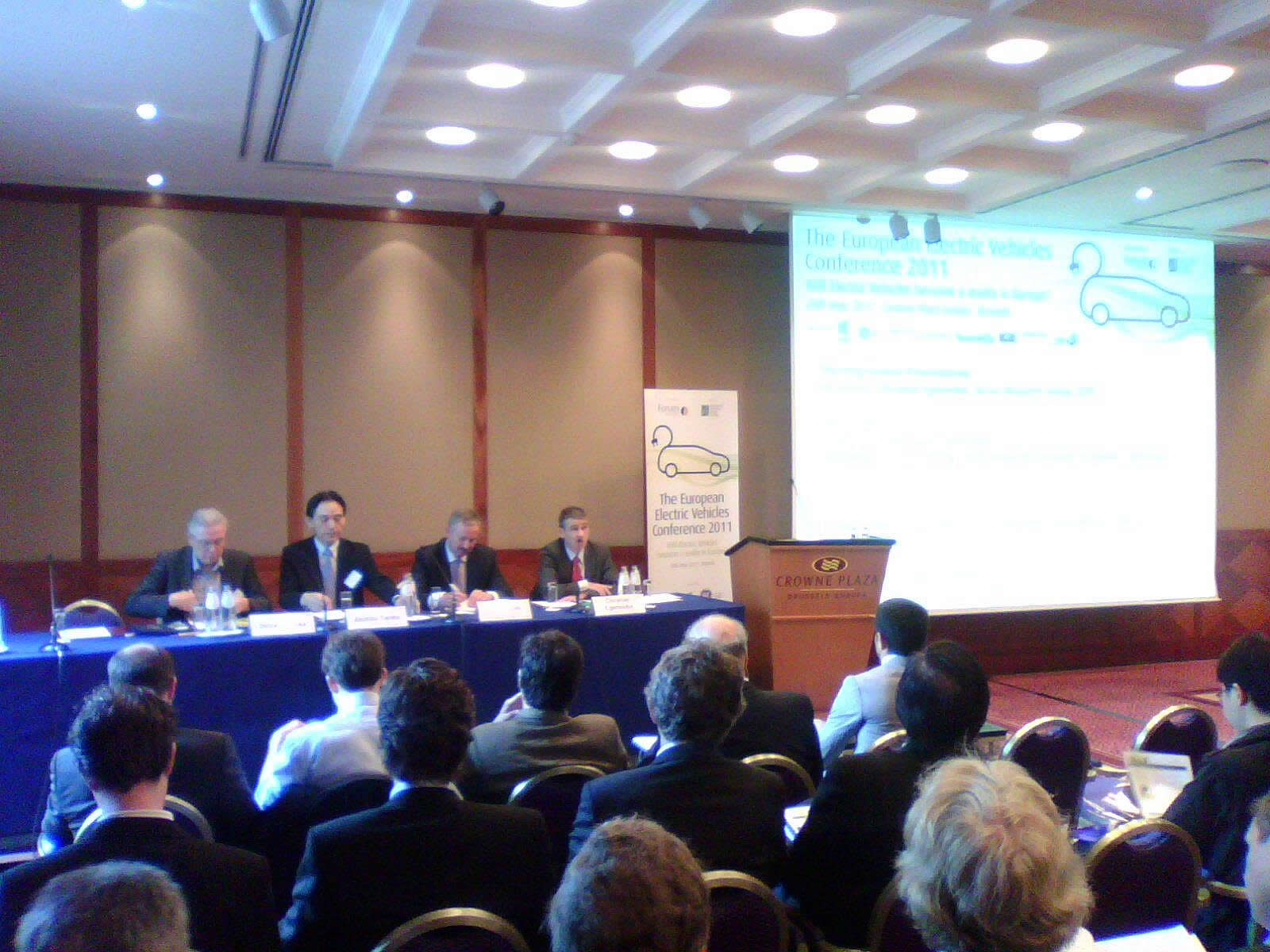
Session 2: Infrastructure and charging solutions – where next for Europe?
While electric vehicles are seen by car manufacturers as a means of meeting increasingly stringent global emissions targets, inadequate infrastructure will delay a widespread shift to electric vehicles. What needs to be done from policy and practical perspectives to create a sustainable network of charging stations? Has standardisation been sufficiently implemented by member states to allow consumers to conveniently recharge their vehicles at accessible, high power, fast charging stations? Will the grid be able to endure the increased requirement for electricity until the development of smart-grid systems for the vehicle-to-grid connection interface becomes a well-established alternative? Is contactless charging the way forward? How will consumers pay for their electricity usage?
Take tours on riding and charging with MOBI-E and ENEL.
Session 3: Ensuring a safe, user-friendly experience for the consumer – what should policymakers and industry be doing?
Electric cars are becoming more and more attractive with the advancement of new battery technologies but uncertainties remain over the overall weight, life cycle and cost of a battery system. Will there be adequate schemes for recycling and reusing batteries? What are the safety risks particular to electric vehicles? How will the high voltage required to power an electric vehicle be handled during maintenance and after collision and how will electric vehicles respond to severe weather conditions or additional weight such as luggage? With the necessity for the availability and extensive distribution of vehicle parts, how convenient will it be for consumers to repair their electric vehicle?
Transport is fundamental, for it connects. The best we can do is work together to achieve sustainable mobility and transport. No lockings of technologies, for there is no oil forever. Some idealism needs also to be present to produce clean and silence energy and electricity. 'The Clean Vehicle Directive' (*) aims at a
broad market introduction of environmentally-friendly vehicles. Not only member- states are involved but for a great part also R&D. Questions of subsidiarity are also in front: set up takes place in towns and cities and decision-making is therefore for municipalities. What is in the hands of the EU is to arrange that the necessary standardization of systems will be achieved. Other developments is mostly for private sector.
For the time being, hybrids are available; on electricity for the short distance and on fuel for the long distance. There is a decrease in costs of batteries. However, fequency of charging the batteries does also matter and is a weak item. In this context hydrogen was mentioned too. Hydroxy will work with any ICE engine. Examples of hydrogen hybrid vehicles can be find on the websites European Hydrogen Association and Hydrogen Fuel Cars.
Discussion was also focussed on energy density: gaseous fuels like hydrogen and liquid fuels like ethanol, gasoline, biodiesels and diesels. Condition however, are that clean electricity is generated, and driving is safe, comfortable, convienent, efficient and optimized.

Are policymakers the group that will get busy with further development? They should just regulate and measure. All the rest is for society, but we have to see it on long term: 2020, 2030, 2050. There is also the political part: research, support, coordination (member-states and EU), environment. Many different levels to reach, but it is promising for Europe and people are willing to buy electric vehicles. Infrastructure, standardization and incentives will increase the promise if EV's offer practical and economical solutions. Practical: solutions for longer trips (battery swap), charging infrastructure.
To stimulate, no vehicle tax, no extra tax on electricity, but use of bus lanes and that sort of rewards of benefits. Furthermore, we need finance, non finance measures and partners.
By scarcity and other limits we have to change. Energy security, driving a new industry, climate change and decreasing (city) health is too important to ignore. It is to be expected that there will be world-wide 5 million EV's by 2015, of which 20% in Europe. Interoperability and smart grids (on storing, sharing and baring) are required. Deficits have to be filled from surpluses elsewhere. Solutions are present. A cross-government and industry leadership across Europe are part of the solutions.
Some risks that were mentioned: charging methods, overheating, maintainance, accidents, range (anxiety).
Not only a move from fossil fuels to electrically powered cars, but also electric two-wheelers have the potential to improve the environment in European cities in many ways: by improving public health and quality of life, by reducing emissions, and by helping traffic flow smoothly and businesses run better.
However this full potential for “Smart2Wheels” in cities will remain untapped until a number of policy and business obstacles are overcome. |
